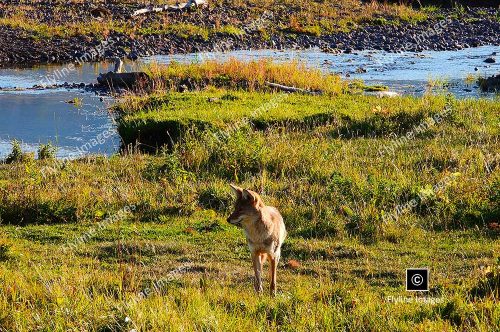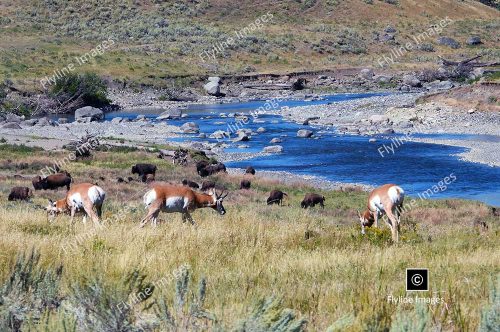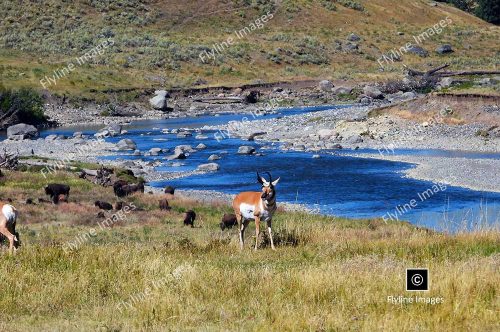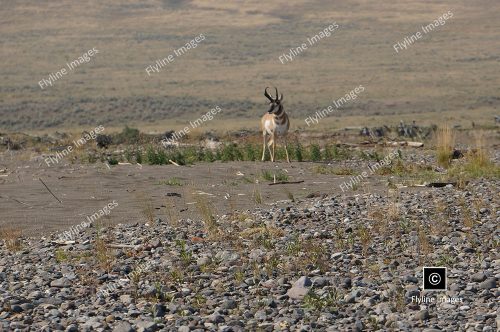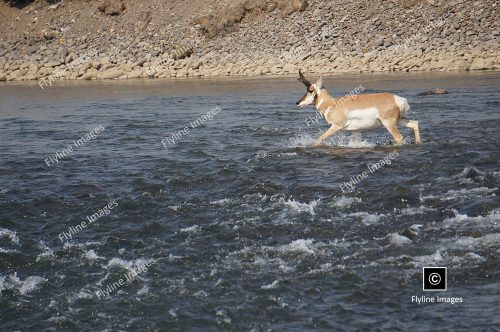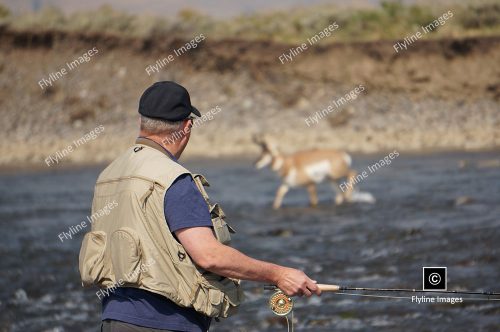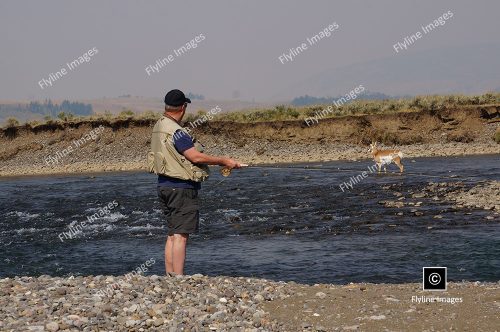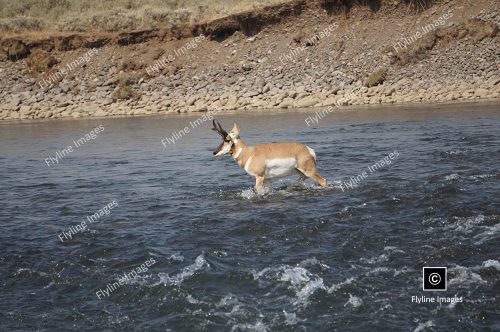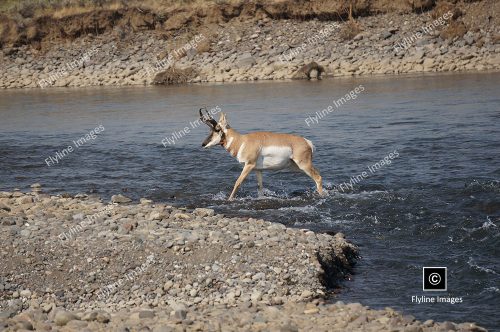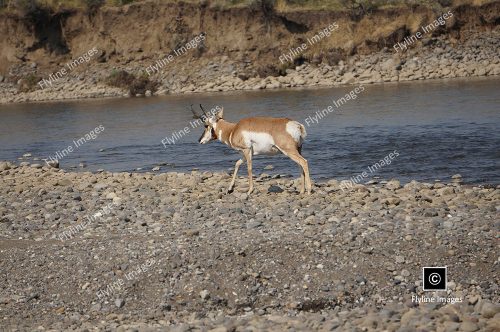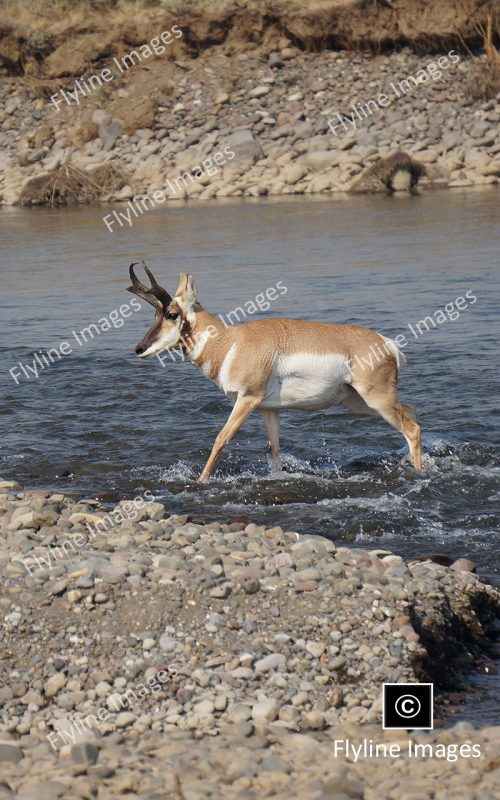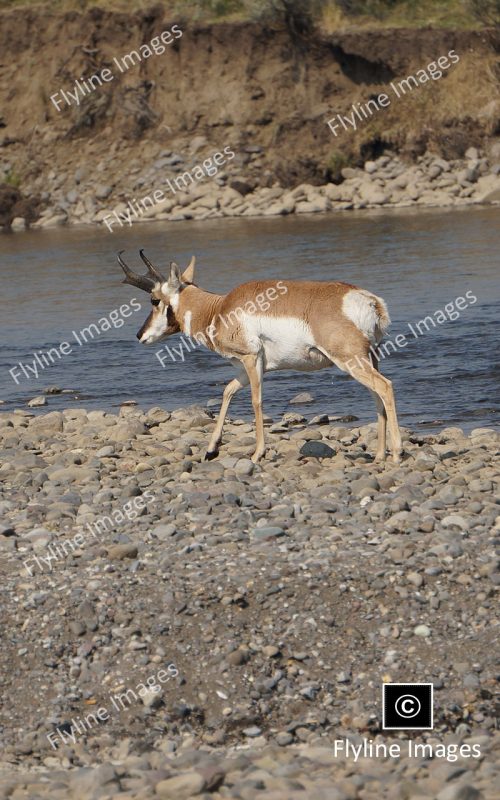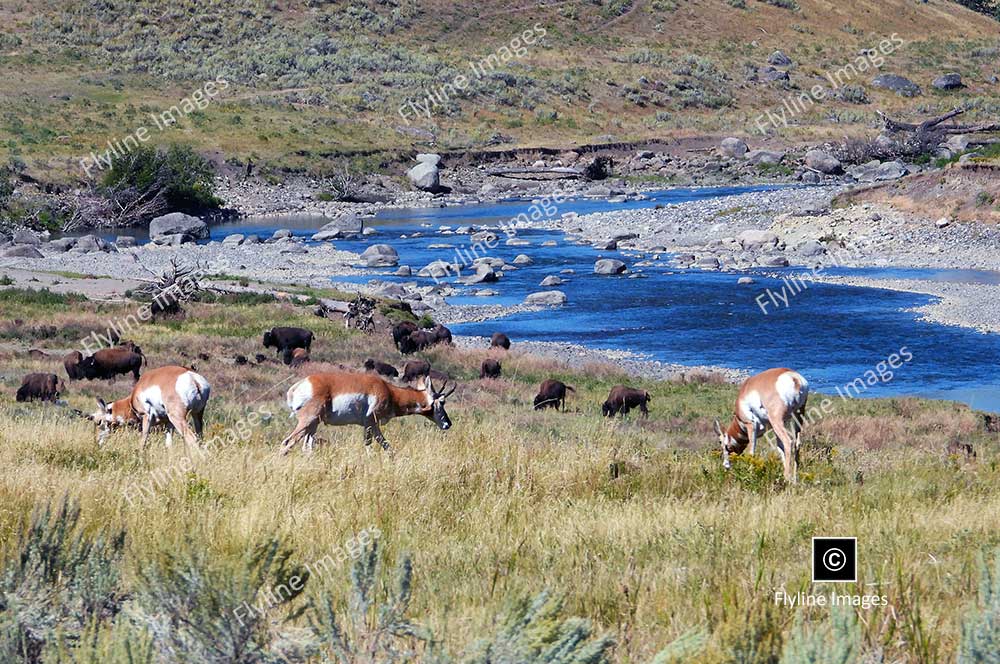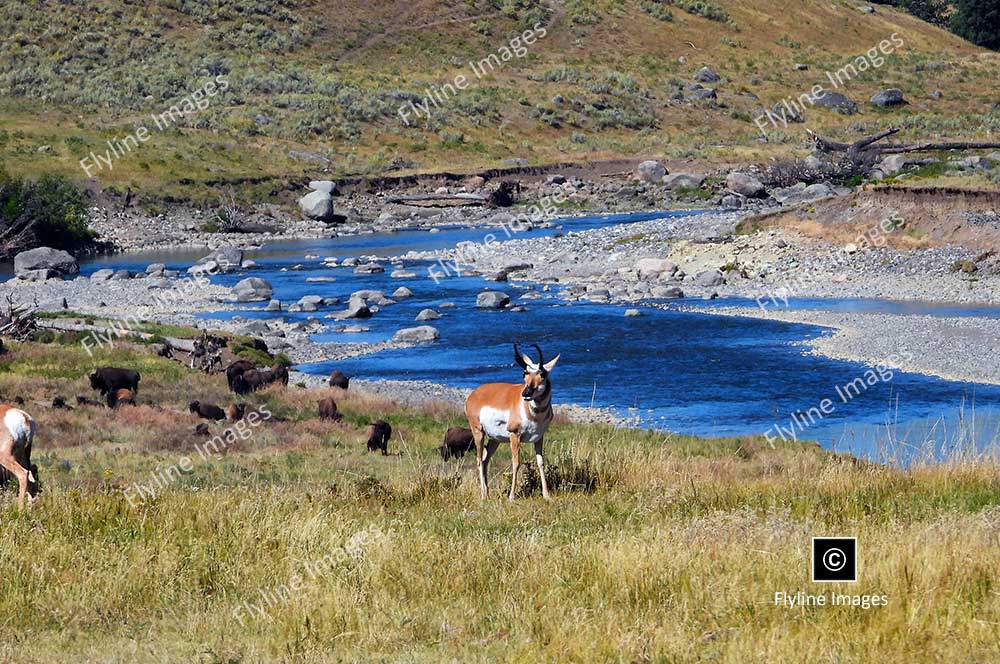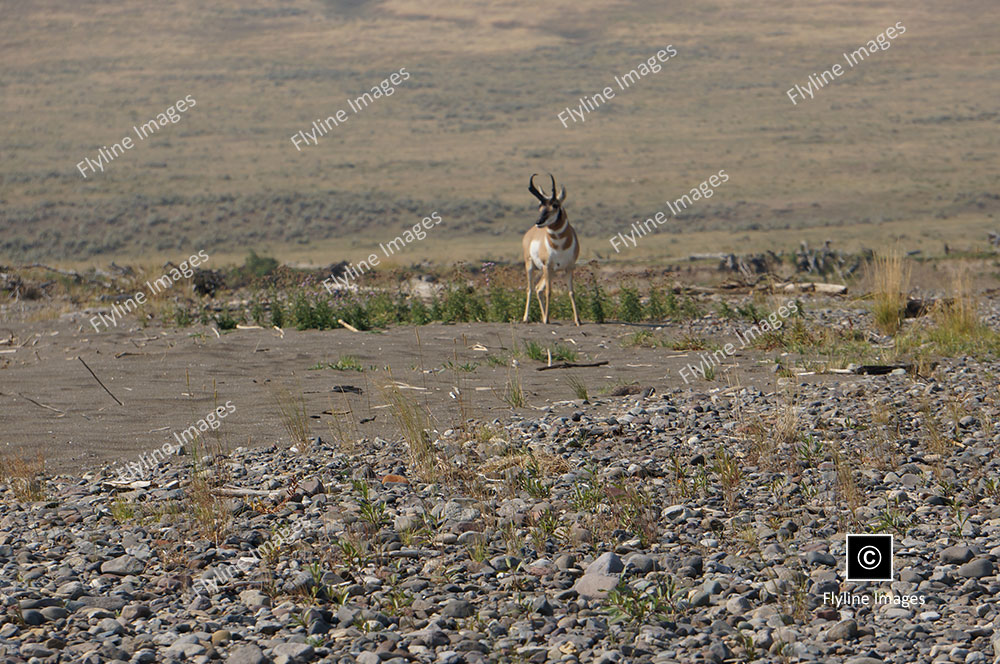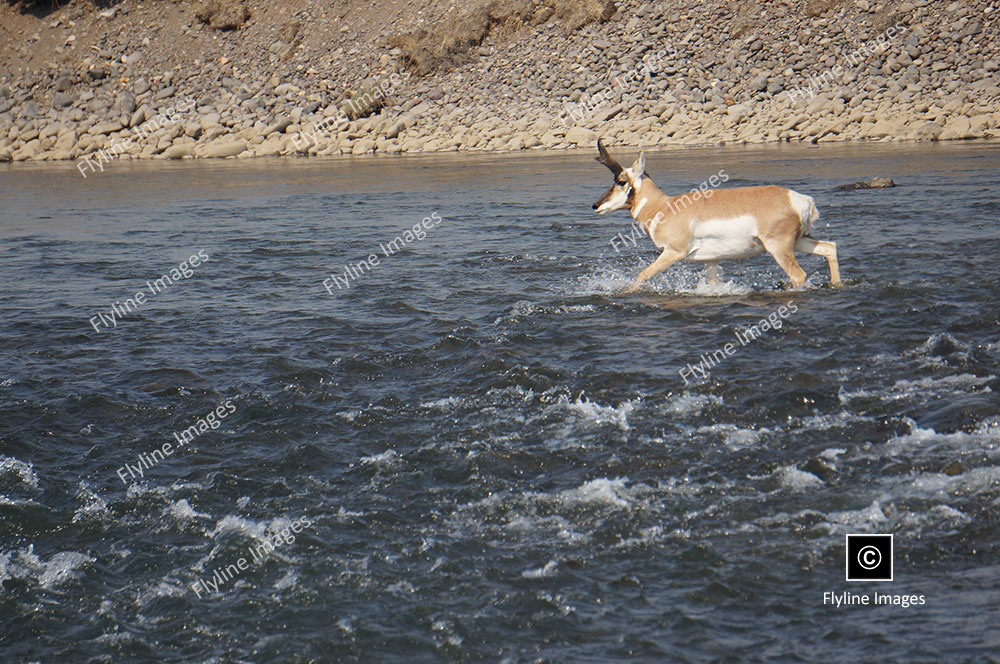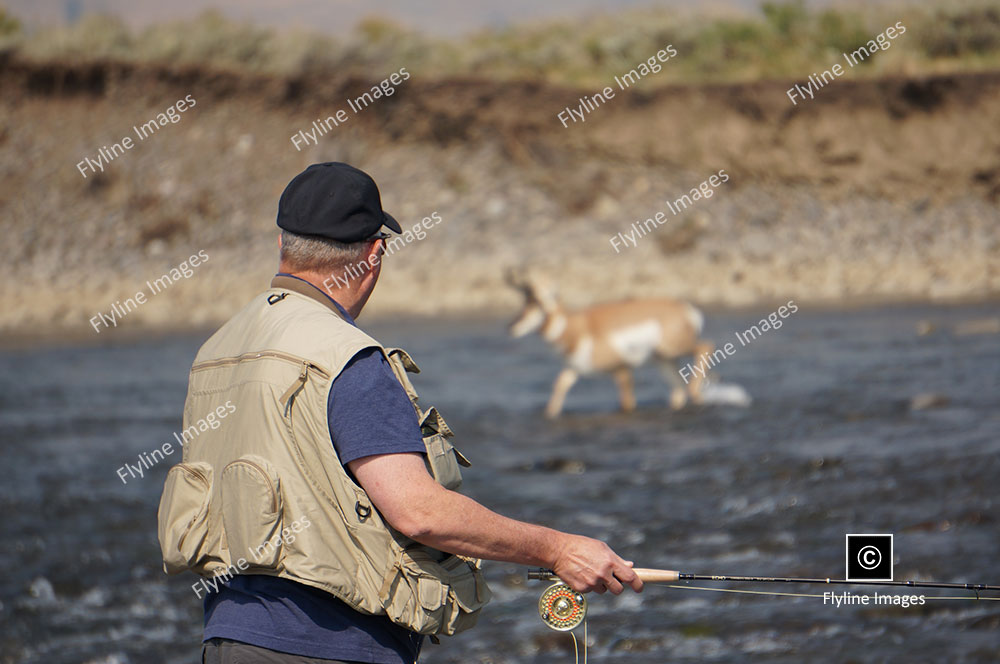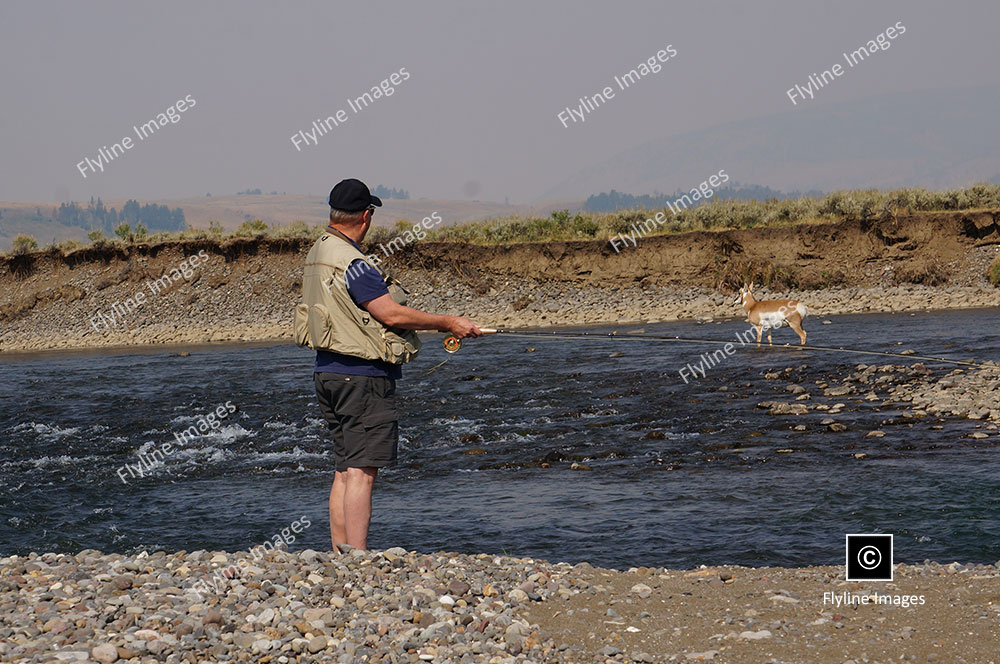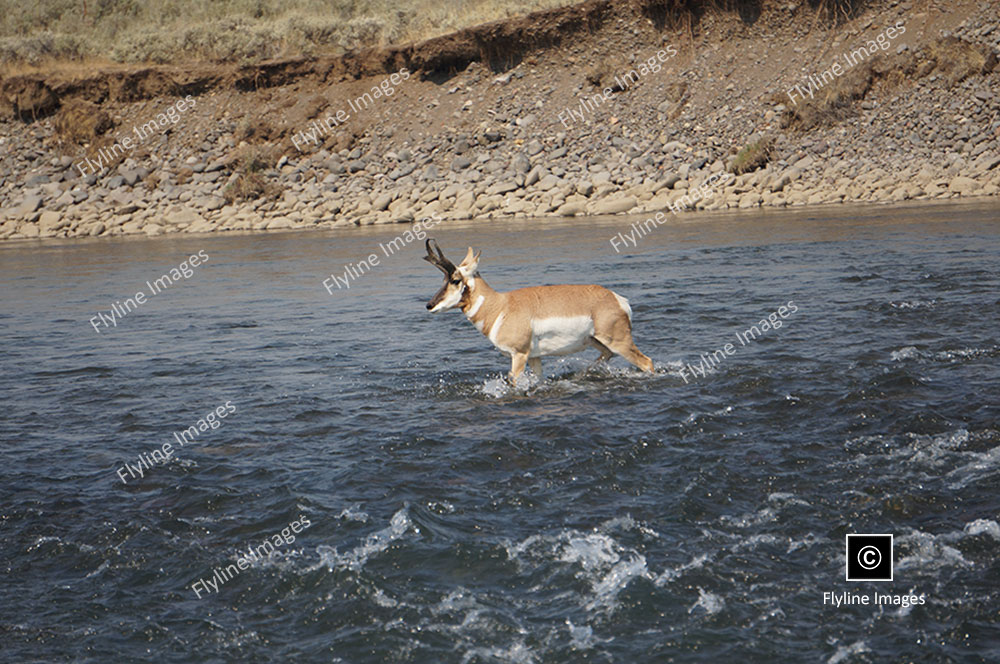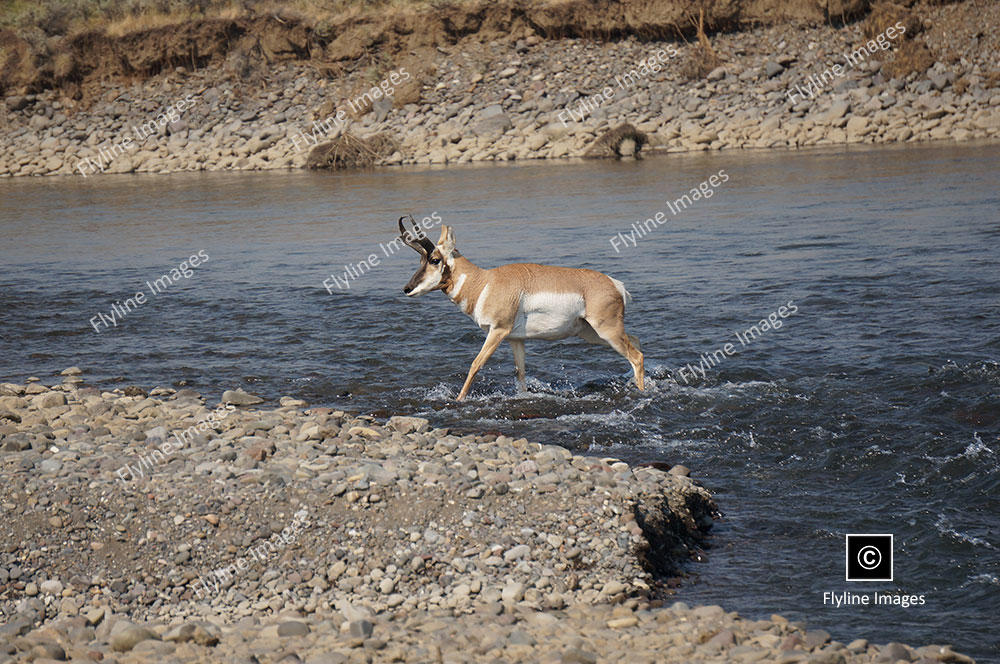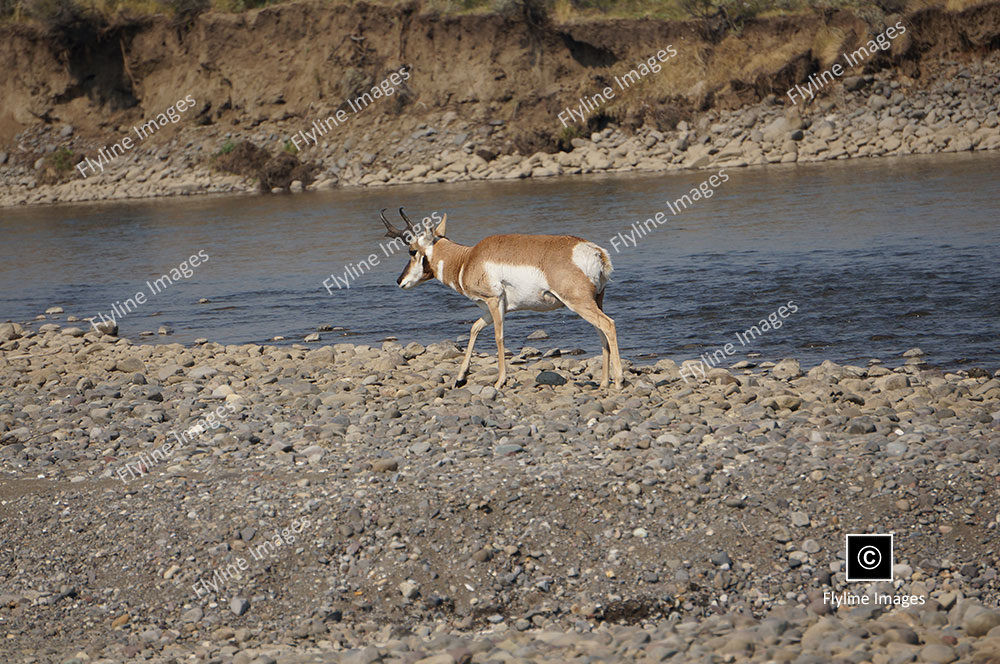Lamar River
Scenic River, Fly Fishing Opportunity, Lamar Valley In Yellowstone
The Lamar River is a prominent waterway flowing through Yellowstone National Park, situated in the northeastern section of the park. Originating from the Absaroka Range, the river courses approximately 40 miles before joining the Yellowstone River. The Lamar River flows through the famed Lamar Valley, often referred to as the “Serengeti of North America” due to its rich wildlife populations. This region is renowned for its stunning landscapes and is a prime location for spotting bison, elk, wolves, and grizzly bears. Anglers are also drawn to the Lamar River for its excellent fishing opportunities, with healthy populations of cutthroat and rainbow trout. The Lamar River not only contributes to the park’s ecological diversity but also provides visitors with unique opportunities to experience Yellowstone’s natural beauty and wildlife.
Portfolio Style Images
More About The Lamar River
The Lamar River is not only significant within the boundaries of Yellowstone National Park but also has historical and cultural importance. The river was named after Lucius Quintus Cincinnatus Lamar, a United States Secretary of the Interior who played a crucial role in establishing the park in 1872. Native American tribes such as the Crow and Blackfeet have long considered the river valley to be sacred land, and it continues to hold spiritual significance for many today.
In addition to its natural and cultural value, the Lamar River also plays a vital role in maintaining the park’s delicate ecosystem. The river supports a diverse array of plant and animal species, including several threatened or endangered species such as grizzly bears and gray wolves. The Lamar Valley is also an important migration corridor for large herds of bison and elk, making it a critical area for maintaining healthy populations of these iconic Yellowstone species.
Visitors to the Lamar River can take advantage of various recreational activities, including hiking, wildlife viewing, and fishing. The river is accessible via several trails that wind through the valley, offering scenic views of the surrounding landscape and opportunities to spot wildlife. In addition, guided tours and educational programs are available for those interested in learning more about the river’s history, ecology, and cultural significance.
Overall, the Lamar River is an integral part of Yellowstone National Park, offering visitors a unique blend of natural beauty, cultural significance, and recreational opportunities. Its diverse array of flora and fauna, rich history, and stunning landscapes make it a must-visit destination for anyone exploring this iconic national park. Whether you are looking to catch a glimpse of Yellowstone’s famous wildlife or simply take in the breathtaking scenery, the Lamar River is sure to leave a lasting impression on all who visit. So next time you find yourself in Yellowstone National Park, be sure to include a trip to the Lamar River in your itinerary – you won’t regret it!
In addition to its role as a vital waterway within Yellowstone National Park, the Lamar River also serves as an important source of irrigation for surrounding areas. The river supports local agriculture through its water supply, allowing for the cultivation of crops and nourishment of livestock. This further highlights the significance of the Lamar River not just as a natural wonder but as an essential resource for both the park and its neighboring communities.
Moreover, efforts are continuously being made to preserve and protect the Lamar River’s ecosystem. The National Park Service works closely with various organizations and agencies to monitor and maintain the health of the river and its surrounding habitats. Visitors can also do their part by following Leave No Trace principles when exploring the area, ensuring that future generations can continue to enjoy this remarkable river for years to come.


